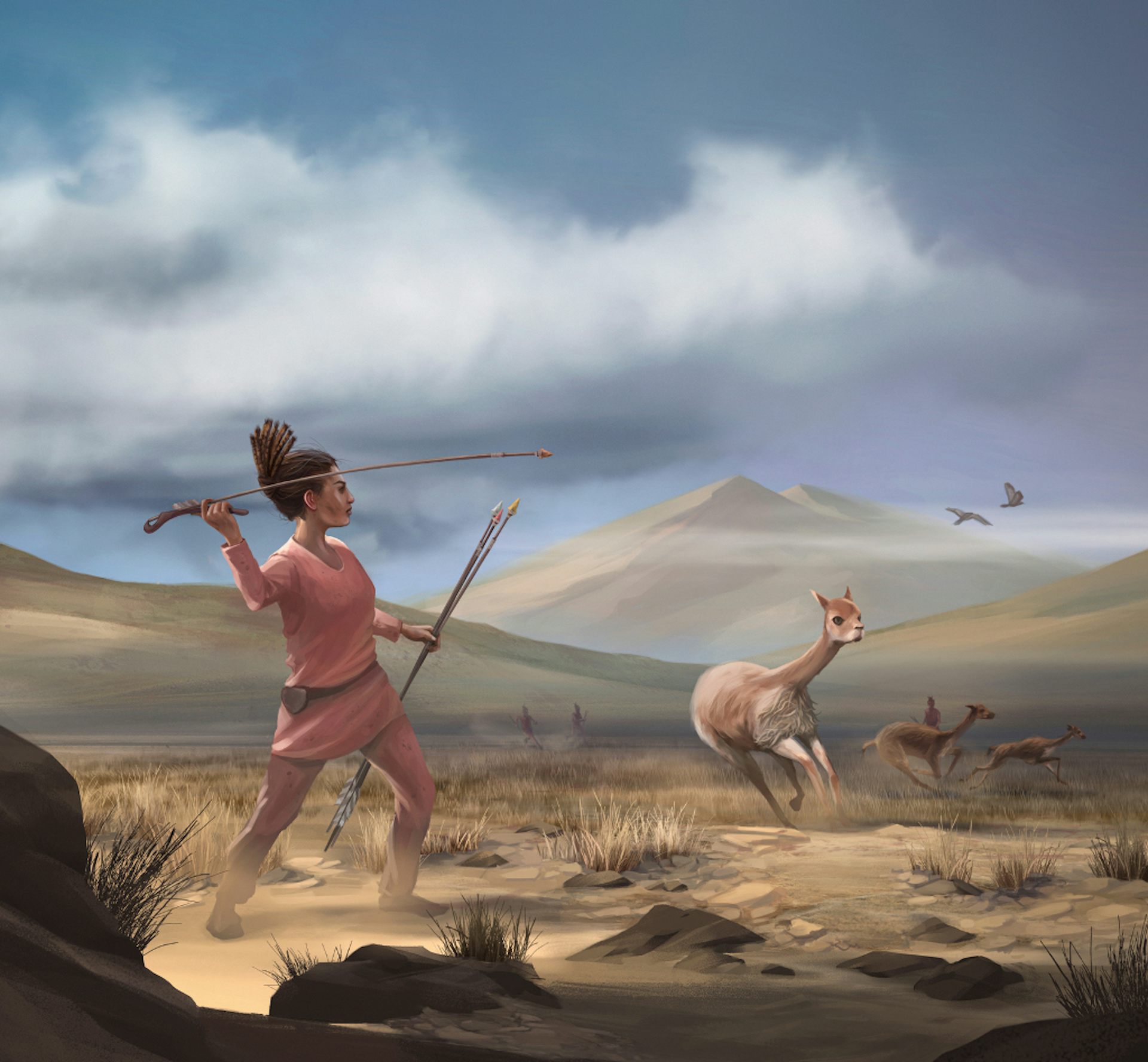Anthropology
Related: About this forumPrehistoric female hunter discovery upends gender role assumptions
Related: Female hunters of the early Americas (Science Advances)

An artist's depiction of what hunting may have looked like in the Andes Mountains of South America 9,000 years ago. Archaeologists were surprised when analysis of a hunter burial from the time period revealed the individual was biologically female. Matthew Verdolivo
(UC Davis IET Academic Technology Services)
______________________________________________________________________
Source: National Geographic
Prehistoric female hunter discovery upends gender role assumptions
Researchers have generally thought that only prehistoric males hunted—but what if evidence against that idea has been lying in plain sight for decades?
BY MAYA WEI-HAAS
PUBLISHED NOVEMBER 4, 2020
Randall Haas, an archaeologist at University of California, Davis, recalls the moment in 2018 when his team of researchers gathered around the excavated burial of an individual lain to rest in the Andes Mountains of Peru some 9,000 years ago. Along with the bones of what appeared to be a human adult was an impressive—and extensive—kit of stone tools an ancient hunter would need to take down big game, from engaging the hunt to preparing the hide.
"He must have been a really great hunter, a really important person in society"—Haas says that’s what he and his team were thinking at the time.
But further analysis revealed a surprise: the remains found alongside the toolkit were from a biological female. What's more, this ancient female hunter was likely not an anomaly, according to a study published today in Science Advances. The Haas team’s find was followed by a review of previously studied burials of similar age throughout the Americas—and it revealed that between 30 and 50 percent of big game hunters could have been biologically female.
This new study is the latest twist in a decades-long debate about gender roles among early hunter-gather societies. The common assumption was that prehistoric men hunted while women gathered and reared their young. But for decades, some scholars have argued that these “traditional” roles—documented by anthropologists studying hunter-gatherer groups across the globe since the 19th century—don’t necessarily stretch into our deep past.
While the new study provides a strong argument that the individual in Peru was a female who hunted, plenty of other evidence has long been lying in plain sight, says Pamela Geller, an archaeologist at the University of Miami who is not part of the study team.
-snip-
Read more: https://www.nationalgeographic.com/science/2020/11/prehistoric-female-hunter-discovery-upends-gender-role-assumptions/
LizBeth
(11,206 posts)why not? The did not have the bible telling all us female role so it would have been who best could feed without the conditioned knee jerk reaction gotta be a man.
Judi Lynn
(163,691 posts)
A photo provided by Randall Haas shows vicuña in the Andes Mountains of Peru, not far from the Wilamaya Patjxa archeological site. Archaeologists there have recovered roughly 20,000 artifacts, including the remains of six people, one of whom was a female hunter. Randall Haas via The New York Times.
by James Gorman
NEW YORK (NYT NEWS SERVICE).- The discovery of a 9,000-year-old female skeleton buried with what archaeologists call a “big-game hunting kit” in the Andes highlands of Peru has challenged one of the most widely held tenets about ancient hunter gatherers — that males hunted and females gathered.
Randy Haas, an archaeologist at the University of California, Davis, and a group of colleagues, concluded in a paper published in the journal Science Advances on Wednesday that this young woman was a big game hunter, who participated with her people in the pursuit of the vicuña and deer that made up a significant portion of their diet.
The find of a female hunter is unusual. But Haas and his colleagues make a larger claim about the division of labor at this time period in the Americas. They argue that additional research shows something close to equal participation in hunting for both sexes. In general, they conclude, “early females in the Americas were big game hunters.”
Other scientists found the claim that the remains were those of a female hunter convincing, but some said the data didn’t support the broader claim.
Robert L. Kelly, an anthropologist at the University of Wyoming who has written extensively on hunter gatherers, said that while one female skeleton may well have been a hunter, he was not convinced by the analysis of other burials that “the prevalence of male-female hunters was near parity.” The researchers’ sample of graves was small, he said, noting that none of the other burials were clearly female hunters.
More:
https://artdaily.cc/index.asp?int_sec=11&int_new=129852#.X6UNrYhKjMU

Excavations at Wilamaya Patjxa in present-day Peru. Randall Haas